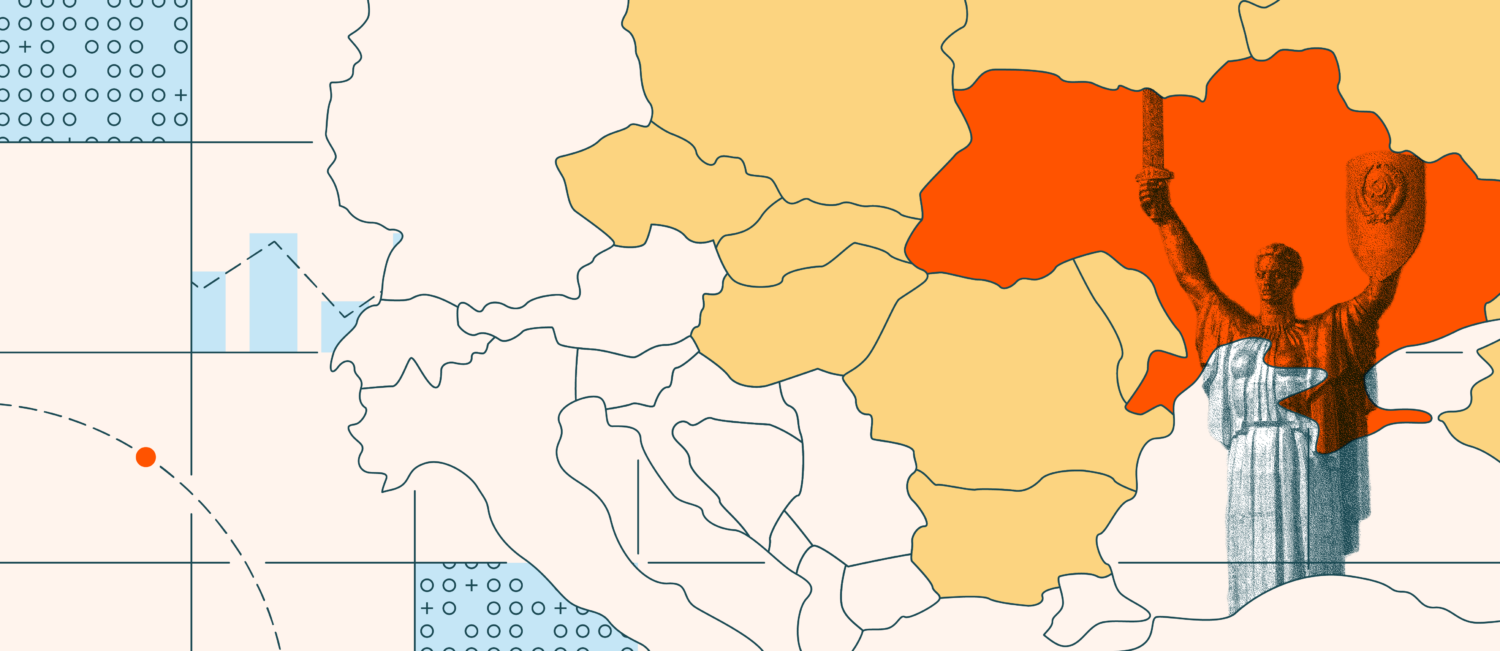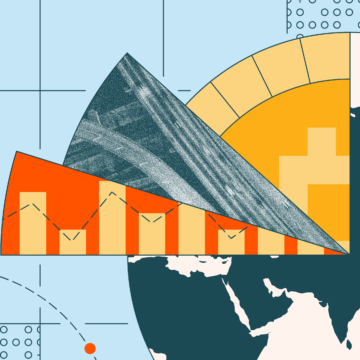This post is an excerpt from our 2023 Geography of Cryptocurrency Report. Download your copy now!
Eastern Europe is the fourth-largest cryptocurrency market we study, with $445 billion in value received on-chain between July 2022 and June 2023. That value represents 8.9% of global transaction activity during the time period studied.
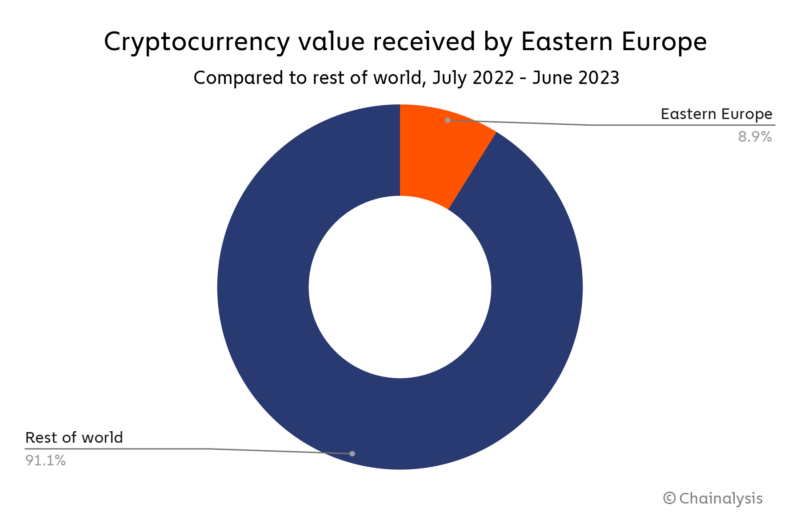
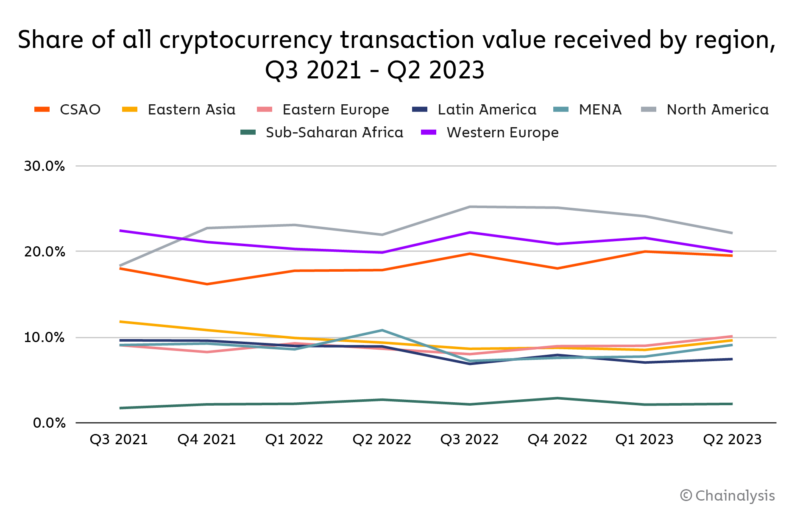
Crypto usage fell in most regions of the world, and Eastern Europe was no exception. In the past year, raw transaction volume in this region decreased by 22%, in line with the decline seen globally during that time frame. And while other region’s economies show signs of recovery from crypto winter, Eastern Europe still contends with economic impacts from the Russia-Ukraine War, which we’ll discuss in more detail later — the two countries are the biggest crypto players in the region in terms of both raw transaction value and grassroots adoption.
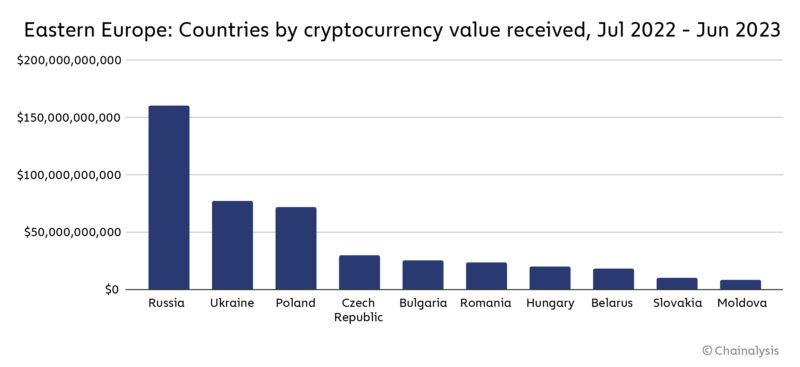
Most transaction volume in Eastern Europe is driven by institutional-sized transfers, while the region sees a relatively even split between centralized exchanges and DeFi protocols in terms of on-chain transaction volume.
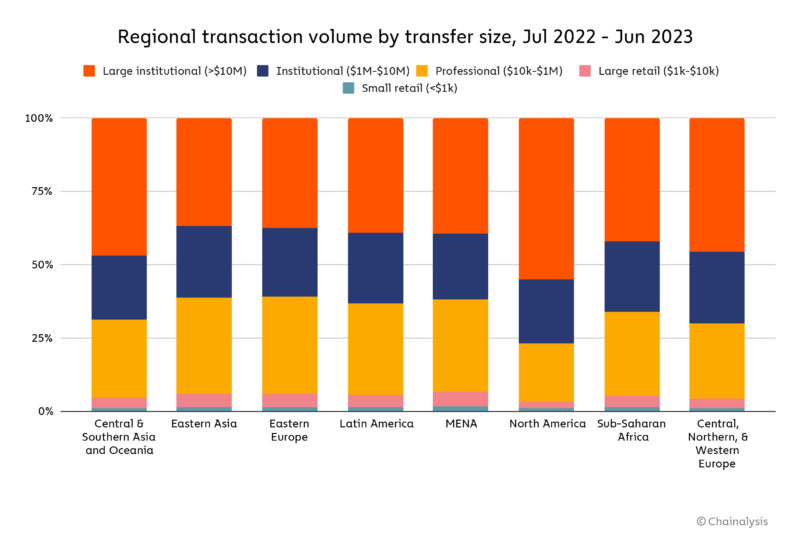
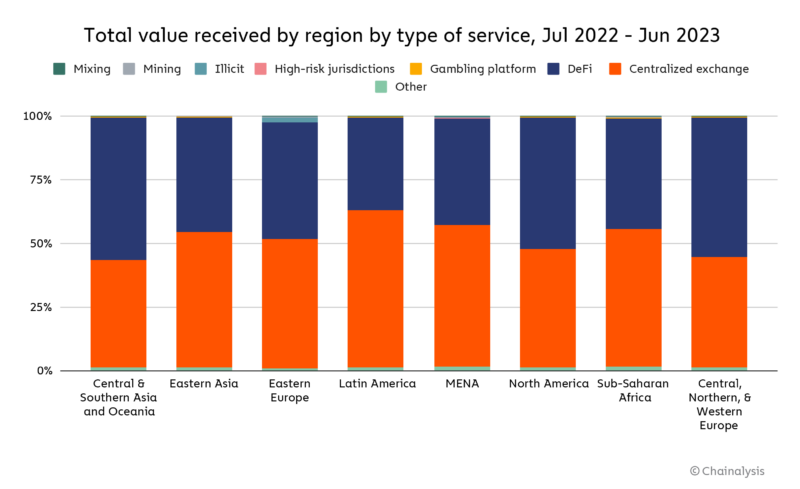
However, interesting trends emerge when we break down Eastern Europe’s cryptocurrency activity by transaction size over time. Despite three spikes in the time period studied, large institutional transaction volume has been on a steady decline. Smaller institutional transaction volume, on the other hand, has stayed relatively steady despite some periods of volatility, and professional-sized transaction volume has trended above both. Retail transaction volume has also remained steady. All in all, the data suggests that while the region’s biggest crypto users have dialed back their activity amidst crypto winter, the rest remain committed to the asset class.
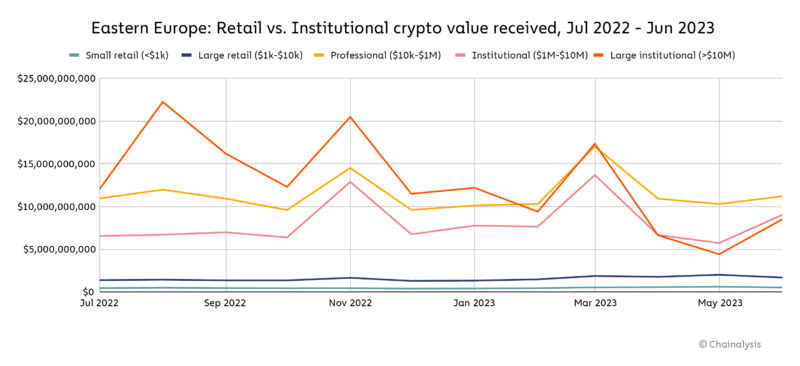
As we’ve seen in other regions, the biggest ebbs and flows in Eastern Europe’s crypto activity have coincided with tumultuous market events like the FTX collapse at the end of 2022, as well as the Silicon Valley Bank (SVB), Silvergate Bank, and Signature Bank shutterings in March. Transfer size data shows that institutional crypto investors in particular changed their behavior most during this time period.
One notable positive trend for the region is in DeFi. Eastern Europe was one of only three regions to see an increase in DeFi activity at 3%.
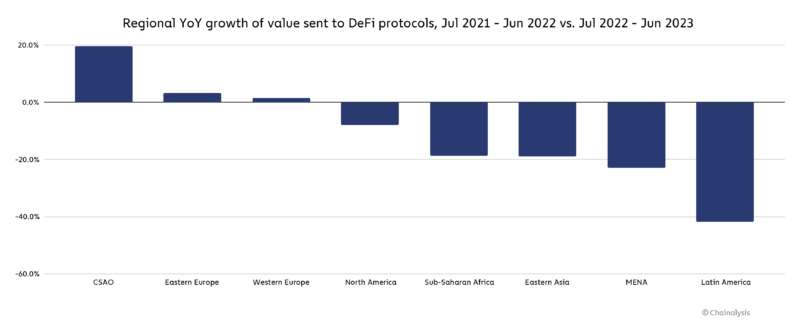
It’s complicated to determine what may have caused this uptick, but uncertainty around regional regulations and crypto market shakeups may have been contributing factors. In the past, we’ve observed that investors turn to DeFi when problems arise with centralized exchanges or in times of market crisis, likely because of the greater control over funds DeFi gives users due to protocols’ non-custodial nature.
Crypto use remains steady even as dollar figures fall
When it comes to crypto adoption, Ukraine and Russia are typically mainstays on the world’s stage. Though still the regional leaders for crypto usage — both in raw transaction volume and grassroots adoption — Ukraine and Russia also saw the biggest year-over-year decreases in crypto transaction volume of any Eastern European countries, at $35.8 billion and $41 billion respectively. Grassroots adoption dropped as well both in total and compared to other countries, with both Ukraine and Russia falling two and four places respectively in our Global Crypto Adoption Index.
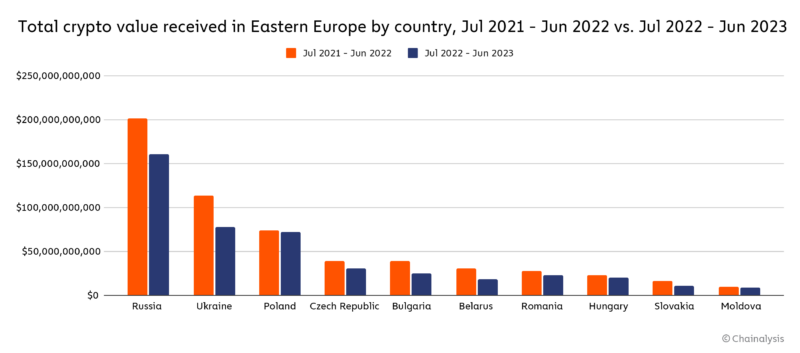
This decline is likely driven by the ongoing war between the two countries, but in different ways. Russia’s decrease is likely driven at least in part by economic sanctions from the United States, the European Commission’s complete crypto ban against Russia last fall, and a general decline in willingness by companies to do business in Russia following the invasion. One piece of evidence is the more than 50% decline in Russian usage of the world’s biggest international exchanges since the months preceding the war, as we see on the index below. That may be in part attributable to restrictions some international exchanges placed on Russian users and banks due to the war. Concurrently, we also see growth in transaction volume on exchanges primarily serving Russia, which aren’t introducing such restrictions.
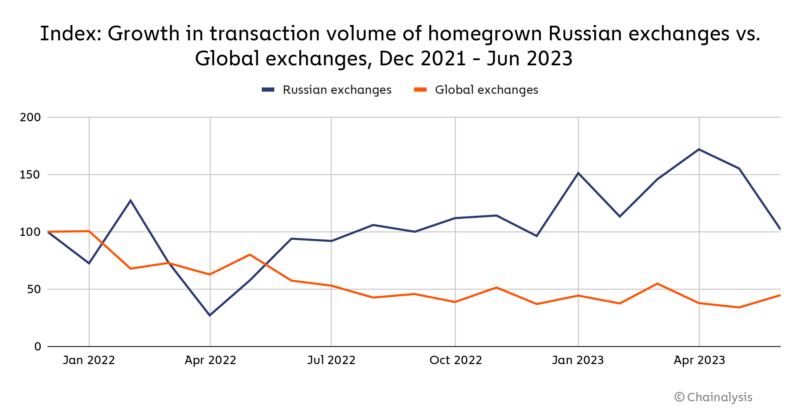
While Russian transaction volumes on international exchanges are still bigger overall than on local exchanges, the opposite trends in usage indicate that at least some Russian users may be turning to local exchanges. But overall, we believe that the restrictions are hurting Russia’s market, along with the same economic headwinds affecting crypto users in other parts of the world.
In Ukraine, on the other hand, we believe that declining volumes are driven more by extreme economic difficulties brought on by the war, as well as the migration of many Ukrainian residents and businesses — including crypto platforms — to other parts of Europe.
Kuna is one such example of a Ukrainian crypto business that has relocated due to the war, as it moved its headquarters to Lithuania this year, and has pivoted its business toward the European market. The company has several banking clients there, and has developed Kuna Pay, a B2B solution for crypto payments that provides on and off ramps. Kuna is also in the process of developing and obtaining the necessary licensure for staking products as well as creating a crypto-custodying solution that Ukrainian banks can use once regulations permit. While discussing these developments, Anna Voievodina, Сhief Legal Counsel of Kuna Exchange said, “The war made us faster.”
She went on to explain that in Ukraine, crypto usage is complicated. On February 17, 2022, the Ukrainian Parliament passed crypto regulation, and the following week, Russia invaded the country. In the months that followed, while millions in crypto donations poured into Ukraine to support its army, some interventions related to the war impacted crypto usage. For instance, the National Bank of Ukraine (NBU) instituted a ban on buying crypto using the Ukrainian hryvnia to “prevent unproductive outflow of capital from the country” and save its national currency. Restrictions have since loosened, and Voievodina says Ukrainians have become even more interested in crypto and are learning about its opportunities.
In spite of the damage war has wrought on Ukraine and its crypto ecosystem, some positives have emerged. Since the European Union extended protection till March 3, 2025 for people fleeing war-torn areas, those refugees are being treated as residents of the EU. Taking advantage of those rights, many are adopting new behaviors like using crypto platforms governed by EU regulations, which are more evolved than crypto frameworks in Ukraine.
Voievodina said, “Since the Ukrainian economy is going down and towns are being destroyed, people are leaving. Now those Ukrainians living under European legal order are using financial instruments they weren’t using before. People are looking for new options and aren’t afraid of KYC as they used to be.” She explained that those Ukrainians are now using crypto for everyday purposes like savings, making donations, and sending remittances back home. In fact, in the last year we estimate remittances sent to Ukraine rose significantly. The chart below shows a rise in small retail transactions, the amounts of which match the size of payments typically sent for remittances.
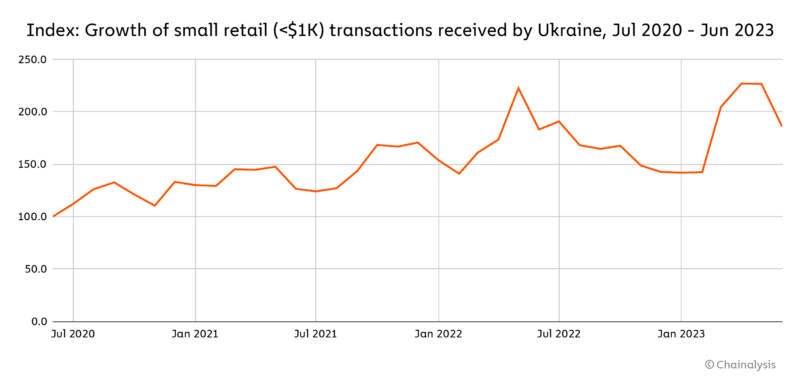
Data on the number of individual crypto transfers, as opposed to just transaction volume, also indicates that crypto usage remains consistent in Eastern Europe. Though Eastern Europe’s transaction volumes have fallen year-over-year, the number of transfers has remained consistent nearly everywhere except for Russia, and has even grown in places like Ukraine and Poland. This suggests that residents of those countries are still using crypto at roughly the same pace.
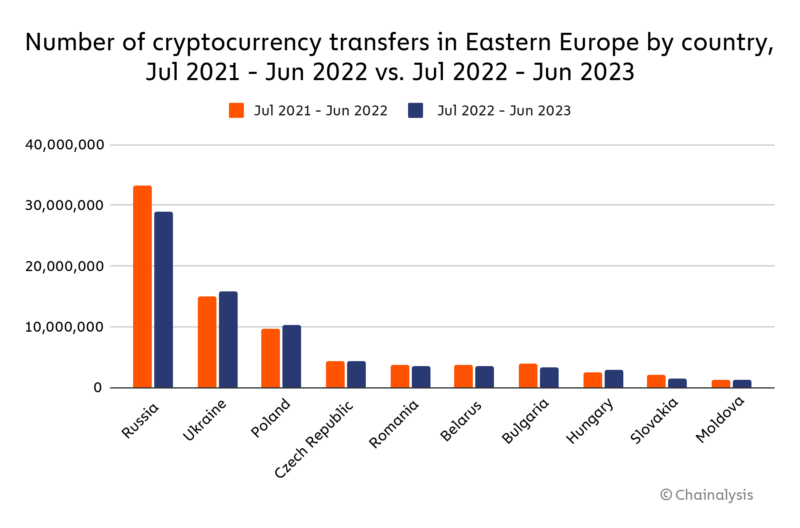
Even in Russia, where the number of individual transfers declined, the drop was small in proportion to the decrease in transaction volume, at 12.8% versus 20.4%. The data above suggests that Eastern Europeans are still getting benefits from cryptocurrency and using it with a similar frequency they did previously, but with less money to actually put into the asset class.
As for future crypto growth in the region, Voievodina believes that Ukrainians becoming more integrated with the EU will drive faster crypto adoption. She also discussed efforts being made to create a new bill that’s compliant with MiCA (Markets in Crypto Assets Regulation), and believes that regulations designed to protect the consumer market will be good for Ukraine. “Governments are recognizing they’ll be left out of the financial market opportunity if they aren’t developing crypto regulation,” she said.
Everyday people are still using crypto in Eastern Europe
Despite the war’s effects, we observed trends in the past year that indicate positive development and growth. First, we see evidence that Russia has less access to international cryptocurrency platforms, which could impact its ability to continue funding the war. Next, the war is causing Ukrainians to become more quickly integrated with the EU, which recently passed the most comprehensive crypto legislation to date. Retail usage grew in spite of global market crises, and in many countries where raw transaction volume has decreased, the number of transfers has stayed steady or increased, indicating that the technology is still providing value to users. DeFi usage also increased in the region as a whole. Whenever the effects of the Russia-Ukraine War diminish, we hope to see more crypto businesses moving back to Ukraine, as well as continual developments in crypto regulation, both of which will continue growing crypto adoption in Eastern Europe.
This material is for informational purposes only, and is not intended to provide legal, tax, financial, or investment advice. Recipients should consult their own advisors before making these types of decisions. Chainalysis does not guarantee or warrant the accuracy, completeness, timeliness, suitability or validity of the information in this report and will not be responsible for any claim attributable to errors, omissions, or other inaccuracies of any part of such material.
This website contains links to third-party sites that are not under the control of Chainalysis, Inc. or its affiliates (collectively “Chainalysis”). Access to such information does not imply association with, endorsement of, approval of, or recommendation by Chainalysis of the site or its operators, and Chainalysis is not responsible for the products, services, or other content hosted therein.
Chainalysis does not guarantee or warrant the accuracy, completeness, timeliness, suitability or validity of the information in this report and will not be responsible for any claim attributable to errors, omissions, or other inaccuracies of any part of such material.
